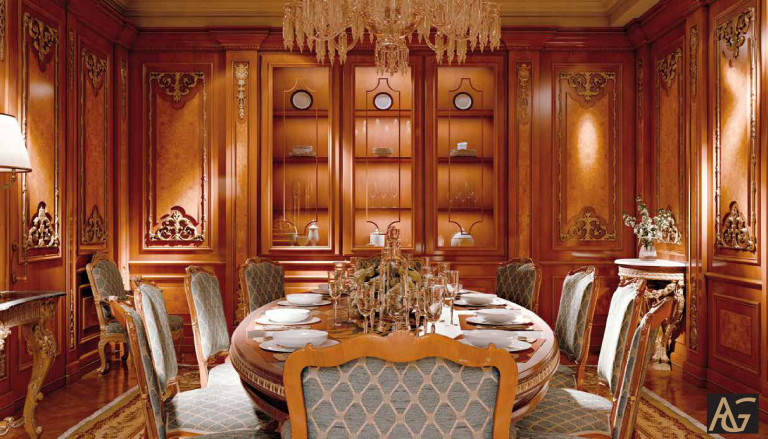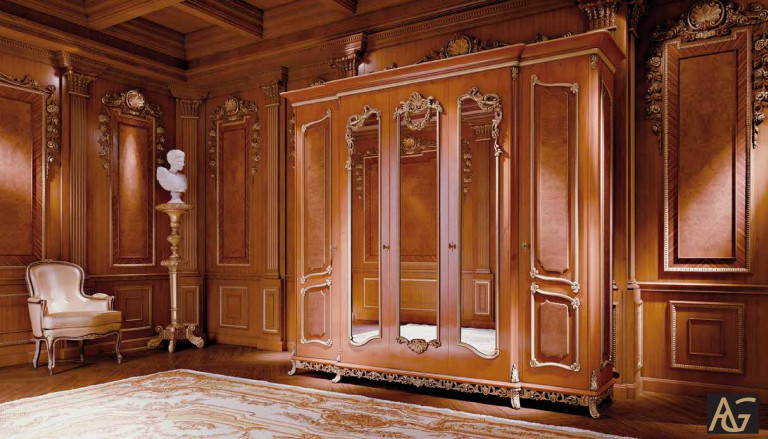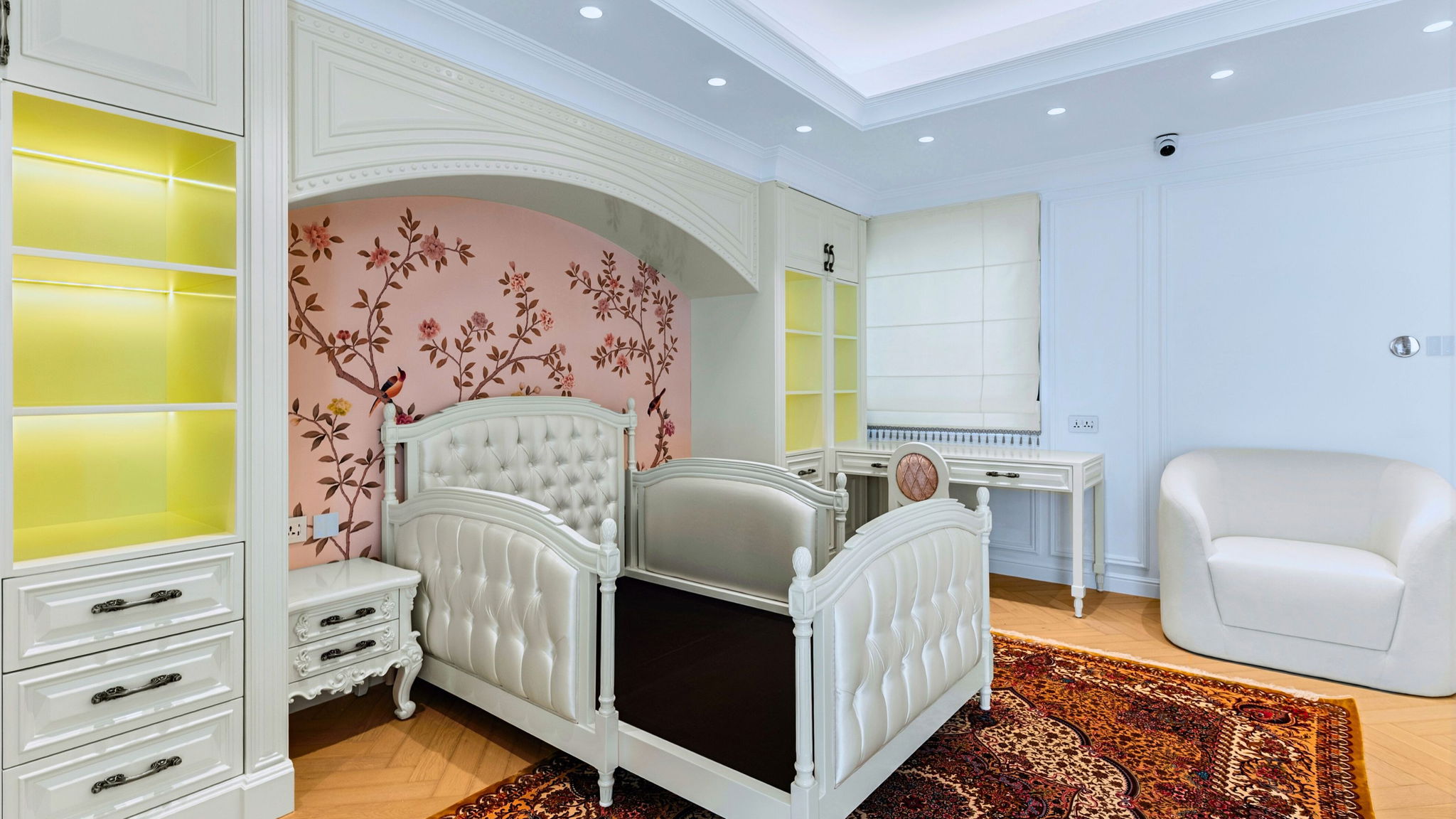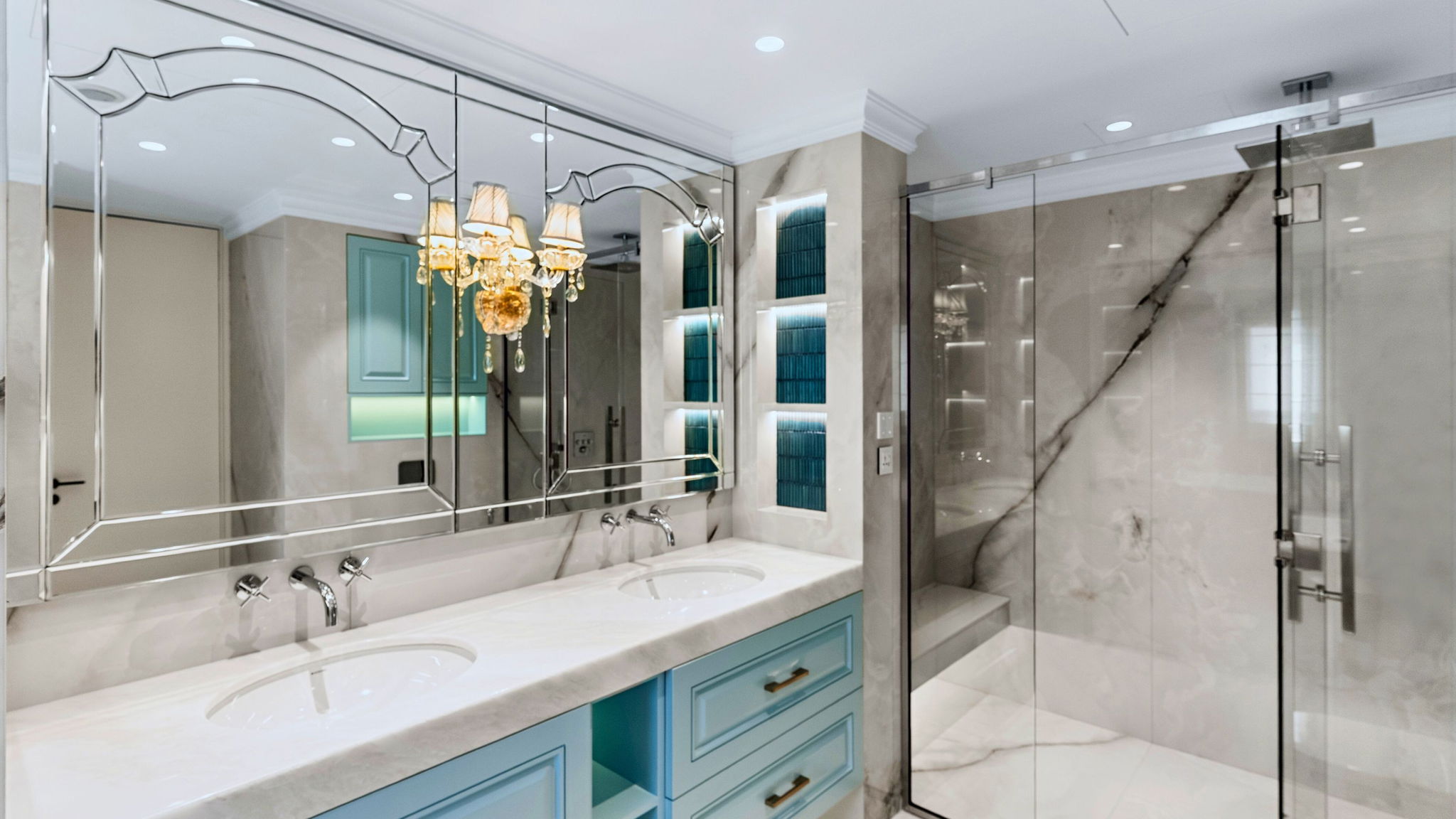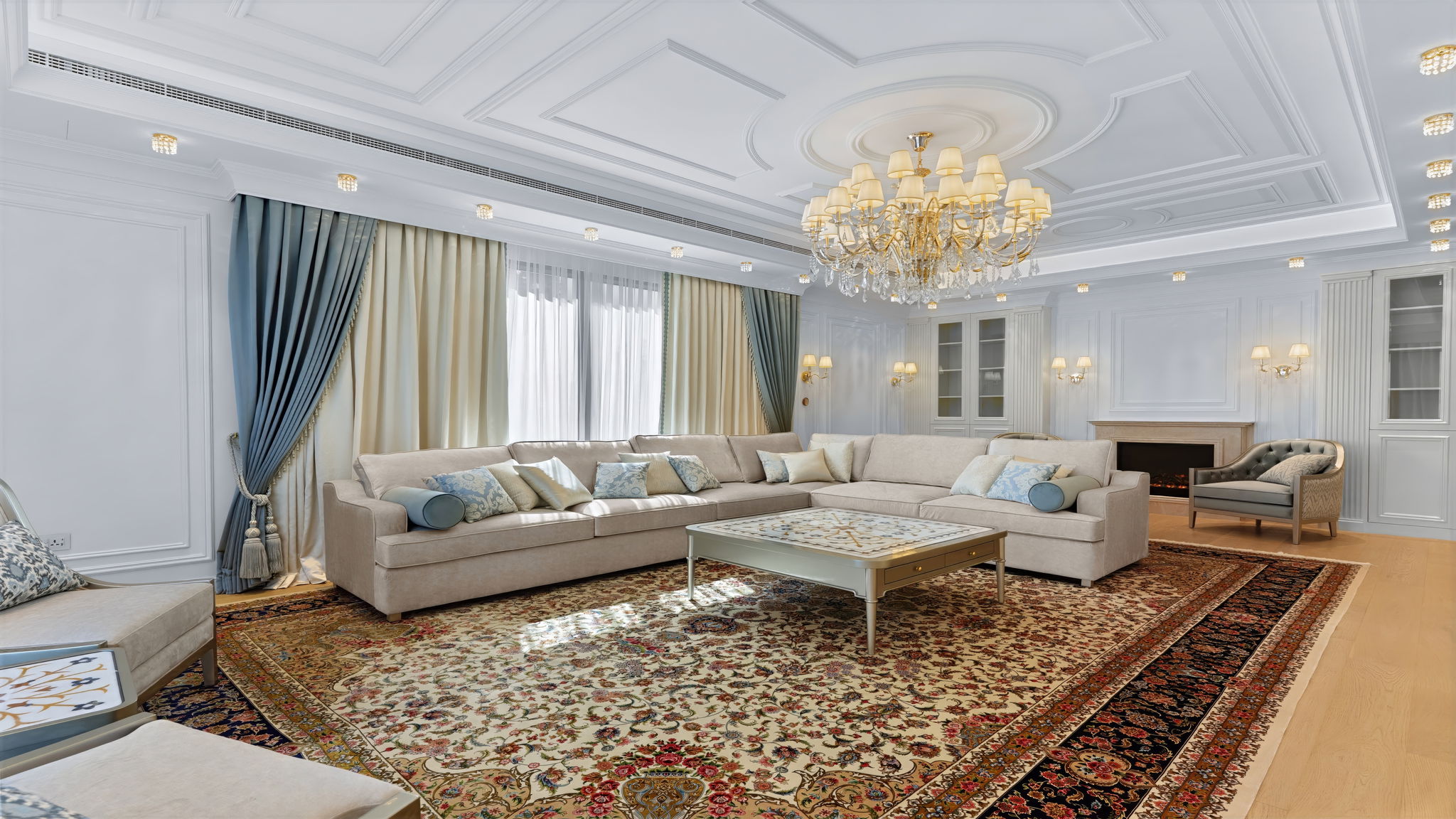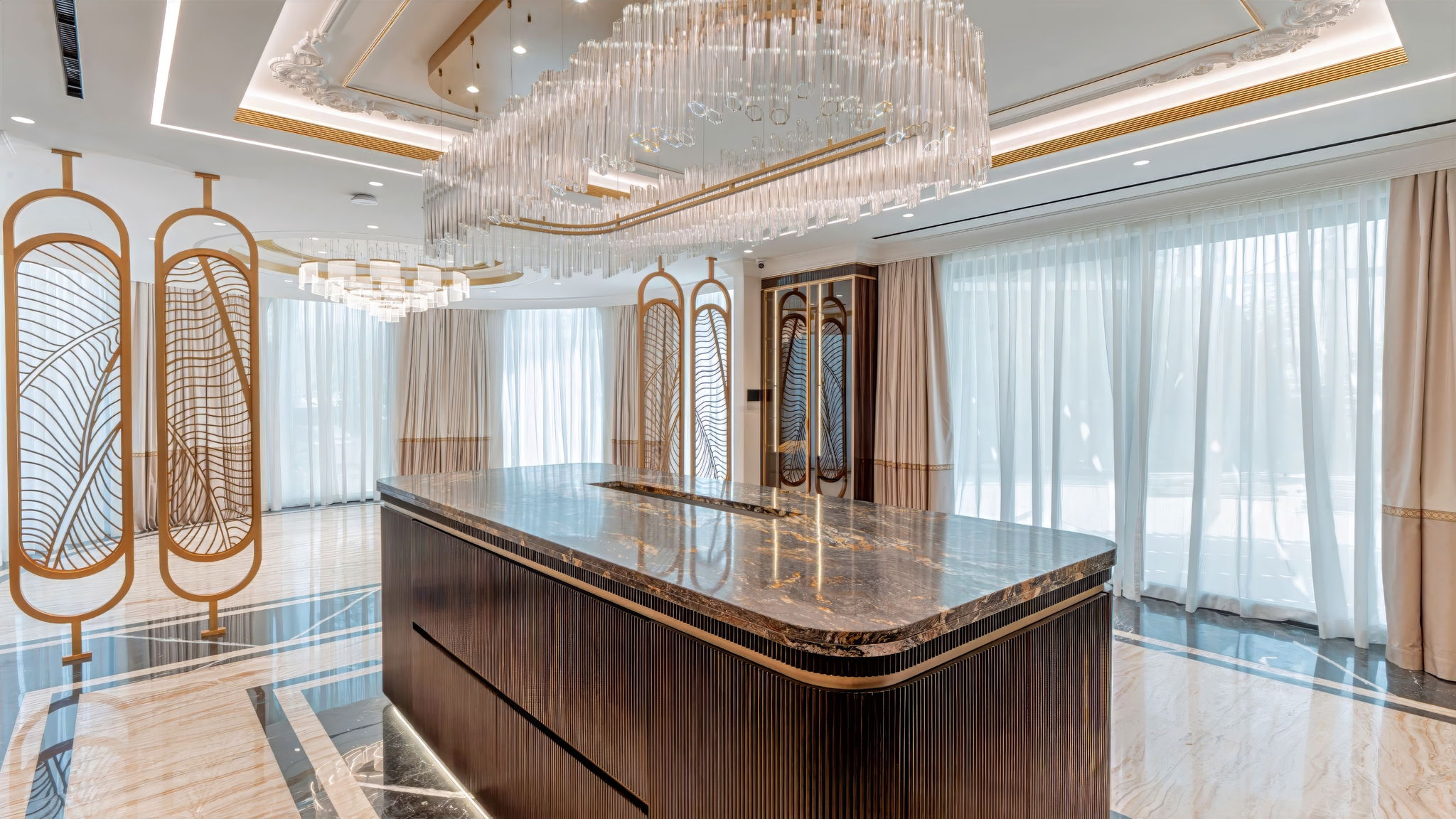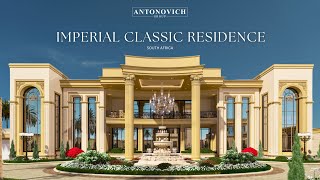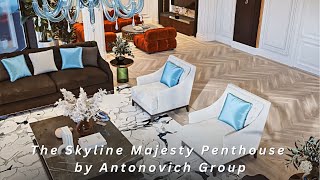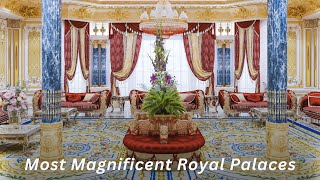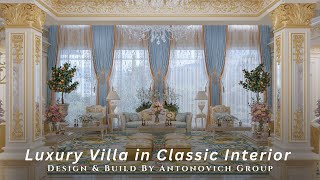CLASSIC interior design SPECIFICATIONS
Interiors with a classic color scheme have muted, unified tones. It is mostly composed of beige, warm browns, and creamy white tones, and it exudes a dignified serenity. Normally, walls are neutral, although they can be wallpapered with subtle patterns such as safe florals, stripes, or jacquard designs. Where possible, the upholstery and cushions of the couch and the armchairs as well as the curtains complement the style. Sparingly employed accent colors with greater vibrancy are often greens and blues. In order to prevent kitsch, the accessories contain a little amount of gold or silver. Finishes lack glaring contrasts and are traditional and understated.
Among the accessories are various antiques, artworks, and artifacts like busts, coffins, silverware, and candlesticks that have ideally been softly worn by the passage of time to give them a more realistic appearance. They ought to be constructed from strong, high-quality materials like marble, priceless metals, wood, or porcelain. To prevent clutter, it's crucial to show them in a sensible way. Large mirrors with gilded frames are among the most popular decorative items since they not only make rooms appear larger but also more prestigious. Layered window decorations, such as muslins and thick drapes, play a crucial role. Classic bathrooms follow similar material and finish rules; see bathroom design of Katrina Antonovich. Frills are being abandoned more frequently in the contemporary version of the traditional design. Flooring is typically finished in a somewhat deeper shade and formed of boards or parquets.
There is space for large, woolen rugs with Turkish or Persian designs. Wherever you can afford it, a classic living room fireplace serves as the room's center of attention. It draws attention, creates harmony, and serves as a focal point for the creatively styled space as a whole. Less ornamental features are used in contemporary classic design. It is organized by symmetrical furniture placement, which makes the rooms comfortable, and welcoming, and makes daily family life easier. To create a more unique room, you may use the classic style's interior design solutions as a starting point and freely include non-traditional components into its formal requirements; this can extend to children's spaces like kids room design Angola. For bedroom-focused guidance, see luxury bedroom interiors in Dubai.
Manufacturers and furniture sellers may need particular affluent lifestyles for their items. Modern roomsets, of course, don't always work for such undertakings, so businesses go to classic interior design for a touch of ethereal sophistication. For sourcing and styling, consult trends like the top furniture trends for your home. For a photoset, it is exceedingly challenging to replicate traditional interiors without going over budget. It is the responsibility of stylists to locate and purchase traditional furnishings, parquet flooring, and wall coverings. Clearly, you have to look for these items at antique shops and auctions. Even once you find them, the price tag can still surprise you because genuine artifacts from historical interiors are quite expensive.
Grecian and Roman architecture are the origins of classic interior design. This style of interior decoration is built on precision, proportion, and order. There are no contemporary inspirations or modern components in classical design. It is rooted in tradition instead. It's critical to comprehend the concept behind a focal point in order to identify classical design from other styles of design. Large focal points are common in rooms with a classical style. Typical focus points are a sizable fireplace, a huge table, or an amazing stairway. The language of classic design also informs outdoor compositions; explore landscaping design in Australia and notable villa exterior and landscape design case studies.
After the selection of the room's main point, all other furnishings are positioned in the space to complement it. A classically styled space is intended to provide a feeling of perfect symmetry. One half of a room would exactly replicate the opposite side of a space if a traditional interior design were split down the middle. A classic room needs to be spotless, from the lighting to the arrangement of the images. Traditional seating arrangements relate to contemporary interpretations such as majlis design solutions, which adapt formal symmetry to social layouts.



